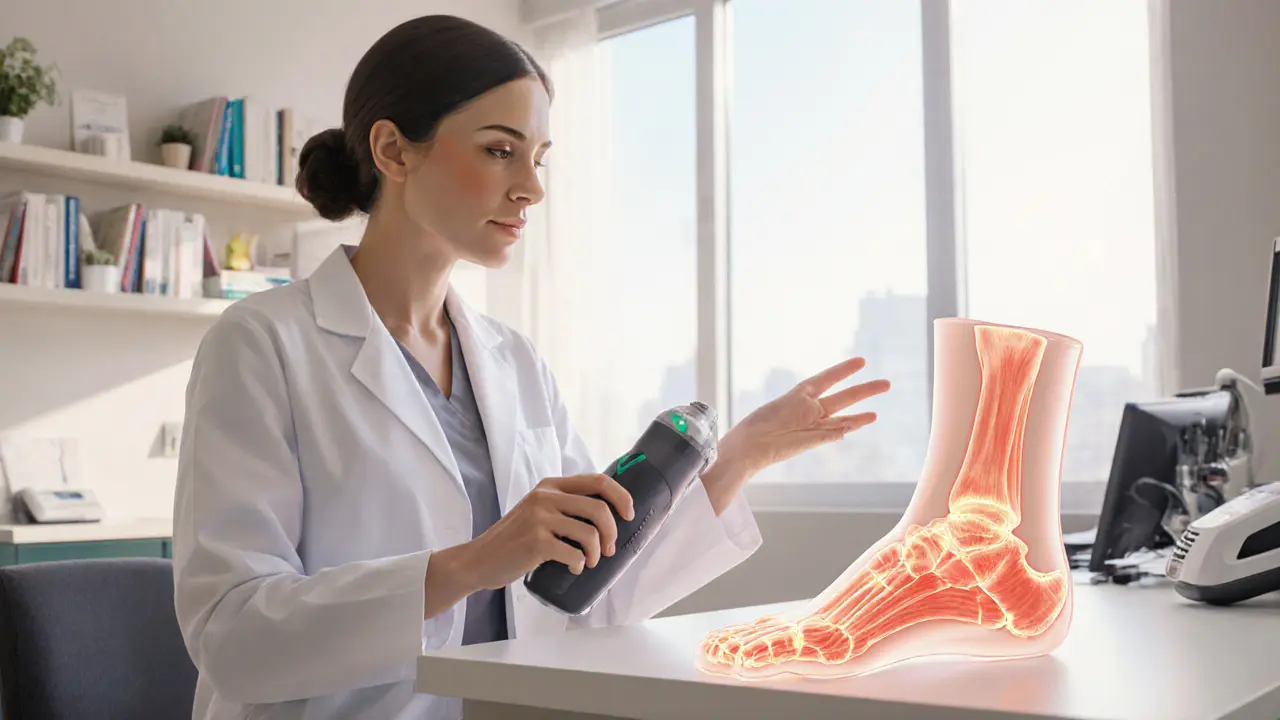
Do Podiatrists Recommend Foot Massagers? Expert Insights & Guidelines
Discover whether podiatrists endorse foot massagers, the health benefits, safety tips, and how to choose the right device for foot pain relief.
Living with diabetes means you have to pay extra attention to your feet. Nerve damage and poor circulation can turn a tiny cut into a serious problem fast. The good news? A few easy habits can stop most issues before they start.
Make checking your feet a part of your morning routine. Sit down, use a hand‑mirror if you can’t see the bottom, and look for cuts, redness, swelling, or dry skin. Even if you don’t feel anything because of neuropathy, visual signs are your early warning system.
When you find a sore, clean it with mild soap and water, pat it dry, and apply an over‑the‑counter antiseptic ointment. Cover it with a non‑stick dressing to keep it from rubbing against shoes.
Comfortable shoes are a must. Pick ones with a wide toe box, soft interior, and good arch support. Avoid high heels, tight socks, or shoes that have seams inside. If you notice any hot spots after walking, change your socks and give your feet a break.
Invest in diabetic socks—these are usually seamless, moisture‑wicking, and designed to reduce friction. Changing socks daily helps keep skin dry and lowers infection risk.
Don’t forget to trim your nails straight across, not rounded. If you have trouble reaching your feet or notice thickened nails, let a podiatrist handle the job. Cutting too short can cause ingrown nails, which are a common source of infection.
Dry skin cracks easily, especially on the heels. Use a thick, fragrance‑free cream after you wash your feet. Skip the area between your toes; excess moisture there creates a breeding ground for fungus.
If you have calluses, don’t pick at them. A professional can file them down safely. Over‑the‑counter callus removers can be too harsh and may damage already fragile skin.
Good blood‑sugar control is the foundation of foot health. High glucose levels slow wound healing and increase infection chances. Pair your medication plan with regular exercise—walking, swimming, or cycling boosts circulation in your lower limbs.
Smoking narrows blood vessels, making foot problems more likely. If you smoke, consider quitting or at least cutting back.
If a sore doesn’t improve in a few days, or if you notice swelling, foul odor, or increased pain, book an appointment with a podiatrist right away. Early treatment can prevent the need for more invasive procedures later.
Regular foot exams by your doctor or a diabetes care team—at least once a year—are also key. They can spot subtle changes you might miss.
Bottom line: a few minutes of daily attention, the right shoes, and keeping your blood sugar steady go a long way toward keeping your feet healthy. Treat your feet like the precious part of your body they are, and you’ll stay on your feet for years to come.

Discover whether podiatrists endorse foot massagers, the health benefits, safety tips, and how to choose the right device for foot pain relief.